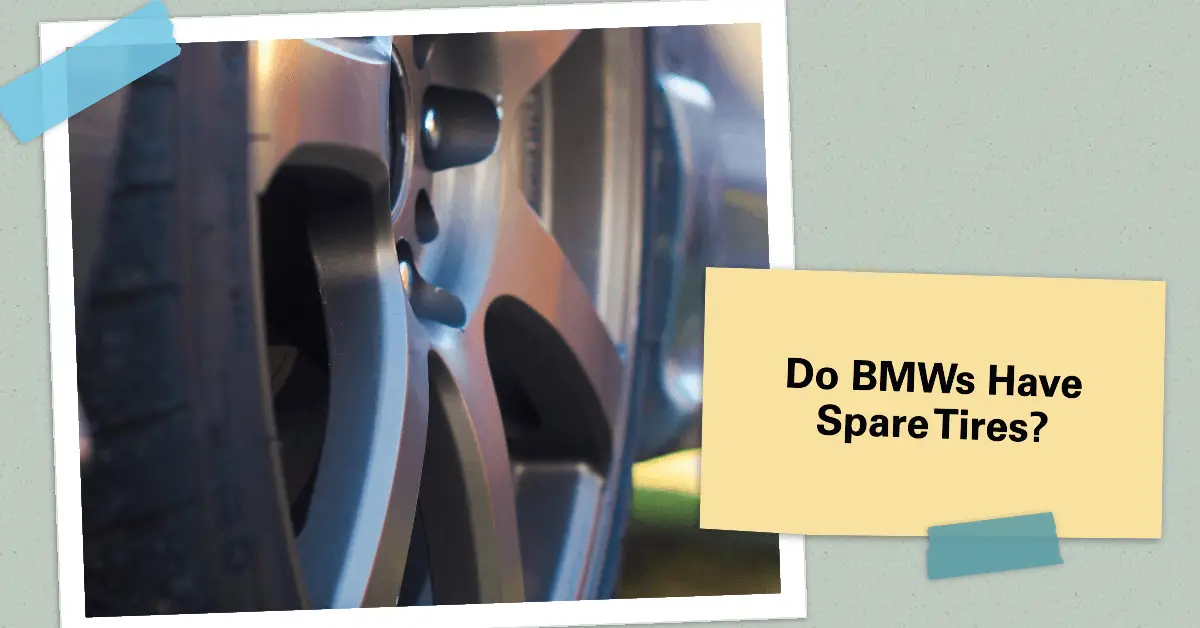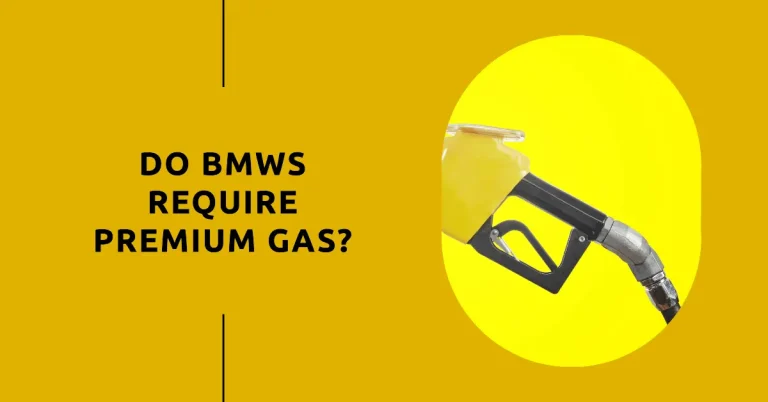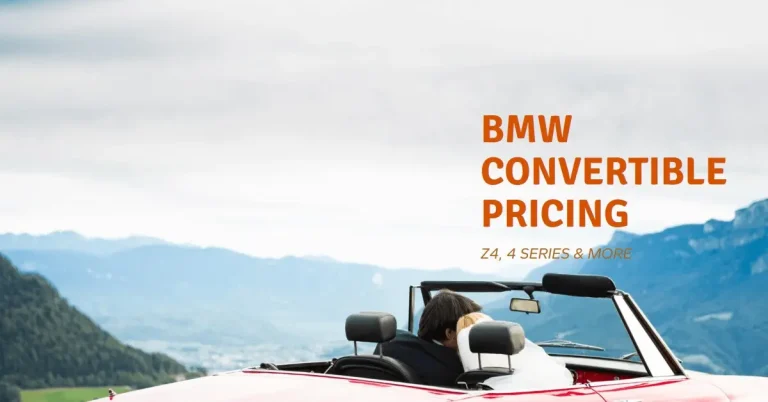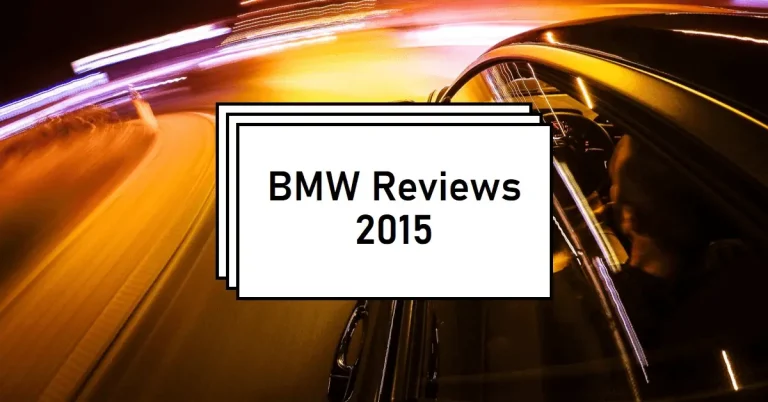Do BMWs Come With Spare Tires? What Models Have Them?
Getting a flat tire is one of the most annoying and inconvenient things that can happen while you’re driving. When it happens, having access to a spare tire is crucial for getting back on the road quickly. But do BMWs come with spare tires?
The short answer is: it depends on the model. Not all BMW vehicles come equipped with a full-size spare tire. In fact, many newer BMW models no longer include them at all.
In this comprehensive guide, we’ll cover everything you need to know about spare tires and BMW models including:
- Which BMW models typically come with spares and which don’t
- Where the spare tire is located if your BMW has one
- Tips for using and maintaining your BMW spare tire
- What to do if your BMW model doesn’t have a spare
By the end of this detailed post, you’ll know exactly what to expect when it comes to spare tires on BMW vehicles so you’re fully prepared in the event of a flat!
Do All BMW Models Come With a Spare Tire?
The answer is no, not all BMW models come equipped from the factory with a spare tire. This can vary quite a bit across model lines, vehicle types, and model years when it comes to spare tires on BMWs.
In general, many newer BMW models no longer include full-size spare tires. This is especially true for some of the smaller coupes, convertibles, and electric vehicles. Some models instead come with “run-flat” tires or no spare at all.
However, many of the most popular BMW sedan and SUV models still do come equipped with a spare tire from the factory. Here are some examples of BMW models that typically have spare tires:
- BMW 3 Series sedan (330i, 340i, 320i)
- BMW 5 Series sedan
- BMW 7 Series sedan
- BMW X3, X4, and X5 SUVs
- BMW M3 and M4
- BMW Z4 (older models)
And here are some BMW models that generally do not come with a spare tire:
- BMW i3 and i8 electric vehicles
- BMW Z4 roadster (newer models)
- BMW 2-Series coupe
- BMW 4-Series convertible and coupe
As you can see, whether or not your BMW comes with a spare tire largely depends on the model, body style, and production year. Your best bet is to check your owner’s manual or look underneath the cargo area flooring to see if your specific BMW has a spare or not.
Why Don’t All BMWs Have a Spare Tire?
If you’re wondering why many newer BMW models no longer come with spare tires, there are a few reasons behind this:
To reduce vehicle weight and improve fuel efficiency. Eliminating spare tires allows manufacturers to reduce the overall vehicle weight by around 30 pounds depending on tire size. This improves fuel efficiency ratings to meet tightening environmental regulations.
Run-flat tires provide an alternative. Many BMWs are now equipped with run-flat tires, either as standard or optional. Run-flats can continue driving at reasonable speeds (50 mph+) for 50+ miles even when punctured and lose air pressure. This gives drivers time to get to a safe place for tire repair or replacement.
Small trunk/cargo space. In vehicles like coupes and convertibles where cargo and trunk space is limited, a full-size spare tire takes up valuable room. Eliminating it allows for more usable space.
Roadside assistance programs. Brands like BMW provide 24/7 roadside assistance with services like tire changes, towing, and vehicle transport in the event of a flat. This gives manufacturers added alternatives to including spares.
So in summary, the overall trend of reducing vehicle weight, introducing new technologies like run-flats, and offering premium roadside service allows BMW to do away with spares, especially in their smaller and specialty vehicles.
Where Is the Spare Tire Located on a BMW?
If you just purchased a used BMW or are borrowing one and need to locate the spare tire, the placement can vary depending on the model. Here are the most common BMW spare tire locations to check:
Underneath the cargo area flooring. For BMW sedans, crossovers, and SUVs, the most common place to find the spare is underneath the flooring in the cargo/trunk area. It may be mounted underneath a foam or plastic panel that needs to be removed first.
Vertically along the rear wall. Some BMW wagon models mount the spare tire vertically behind the rear cargo wall. The tire is secured in a bracket along the wall, which swings down or to the side for access.
Under the vehicle. On rear-wheel drive BMW models, the spare may be mounted underneath the vehicle using a winch mechanism that lowers and raises it. Access is via a panel underneath the rear bumper.
No set placement. On various coupes, convertibles, and specialty models, there is no defined spot. Consult your owner’s manual to see if a spare is even included and if so, where it’s located.
Front trunk on electric models. On electric BMWs like the i3 and i8, the spare tire when equipped is often located in the front trunk or frunk area.
The takeaway is that spare tire placement varies quite a bit depending on the specific BMW model and year. Refer to the owner’s manual for your vehicle if you need help locating it, or search online for spare tire location guides for your particular version.
How to Use Your BMW Spare Tire
Now that you know which BMW models typically have spares and where to find them, let’s go over some tips for using your BMW spare tire if you get a flat:
1. Locate the jack, lug wrench, and spare tire. Your BMW manual will show you where the jack and lug wrench are stored on your model. The spare is either under the cargo flooring or mounted in the rear.
2. Position the jack properly. Consult the manual for the jack placement and jacking points. Improper jack positioning can damage your BMW.
3. Lift the vehicle. Crank the jack up until the tire with the flat is completely raised up off the ground.
4. Remove the lug nuts and flat tire. Using the lug wrench, loosen and remove the lug nuts. Take the flat tire off the wheel hub.
5. Mount and secure the spare. Place the spare on the wheel hub orienting the valve stem correctly. Hand tighten lug nuts in a star pattern until snug.
6. Lower the vehicle. Carefully crank the jack down to lower the BMW and remove the jack.
7. Fully tighten the lug nuts. Using the lug wrench, tighten the lug nuts completely in a star pattern. They should be very secure.
8. Get the flat tire repaired/replaced. While functional, the spare tire is not ideal for extended driving. Get your flat tire fixed or replaced as soon as you can.
Following these steps allows you to safely change out your flat for the spare and get back on the road. Just be sure to properly store the jack, tools, and flat tire after use and get it repaired promptly.
Tips for Maintaining Your BMW Spare Tire
To ensure your BMW spare tire is ready to roll when you need it, here are some tips for proper maintenance and storage:
- Check the tire pressure frequently – At least every couple months, check the air pressure in your BMW spare tire. It should be inflated to the vehicle’s recommended pressure, typically around 30-35 PSI. Add air as needed.
- Inspect the tread wear – When you replace the worn tires on your BMW, consider also replacing the spare if it’s old. The tread should match for optimal performance.
- Store properly when not in use – Keep the spare covered and secured in the proper BMW storage spot. Leaving it exposed to elements like heat and humidity can deteriorate the tire over time.
- Avoid overloading the spare – The spare is meant for temporary use, not hauling heavy loads or high speed highway driving. Keep speeds under 50 MPH.
- Get a full-size, matching spare – Some BMWs come with “compact” spares that are smaller than the original tires. Upgrade to a full-size matching spare if possible for added peace of mind.
Taking the time to properly maintain and care for your BMW spare tire ensures it’s ready to help get you back on the road in the event of an ill-timed flat. Don’t let it be an afterthought.
What If Your BMW Doesn’t Have a Spare Tire?
As we covered earlier, many newer BMW models no longer come equipped with full-size spare tires. If you find yourself with a BMW that doesn’t have a spare, here are some options:
- Confirm it has run-flat tires – Many modern BMWs have run-flat tires either standard or as an option. Make sure yours does to enable driving up to 50 miles on a flat.
- Keep a tire inflator/sealant kit – Portable tire inflator and sealant kits can temporarily plug small punctures. Useful for minor flats and topping off tire pressure.
- Enroll in roadside assistance – BMW and brands like AAA offer 24/7 emergency roadside help for issues like flat tires. Confirm membership is active.
- Research local tire shops – Find a reputable tire center near your home or regular drive routes in case you need a tire repaired or replaced in a pinch.
- Adjust driving habits – With no spare, avoid potholes and curbs, check tire pressure frequently, and try not to drive on severely underinflated tires to prevent further damage.
While not ideal, as long as you take precautions, you can manage safely with a BMW that doesn’t have a spare tire. But for maximum convenience and preparedness, always opt for a full-size spare when selecting your next BMW.
Common Questions About BMW Spare Tires
Here are answers to some common questions drivers have about BMW spare tires:
How much does a new BMW spare tire cost?
A new, replacement BMW spare tire typically costs $200-400 plus labor for installation. The cost depends on tire size, brand, whether run-flat, etc. OEM BMW tires tend to be more expensive.
Can I mount a used spare tire on my BMW?
You can use a high-quality used tire in good condition as a spare temporarily. But for a permanent spare, it’s best to get a new tire that matches the others for traction, handling, and tread life.
Where can I get a spare tire for a BMW?
Your local BMW dealership, independent BMW service shops, tire shops, and some auto parts stores can get OEM or aftermarket BMW spare tires. Online tire retailers also offer delivery.
How do I lower a BMW spare tire underneath the vehicle?
Locate the access panel. Attach the winch hook to the spare’s mounting bracket. Use the winch’s crank handle or ratchet to slowly lower the spare. Support its weight as it gets lowered.
Can I re-inflate a BMW tire punctured by nails or screws?
If they are in the tread and sidewall area, carefully remove them and take to a tire shop to see if safely repairable. Don’t repair yourself as BMW tires require special plugs and procedures.
Conclusion
We hope this detailed guide has helped shed light on whether or not your BMW comes equipped with a spare tire. While the trend is moving away from including full-size spares, especially on newer and smaller models, many popular BMW sedans and SUVs still have them.
Knowing what to expect with your specific BMW, where to find the spare if equipped, and how to properly use and maintain it allows you to quickly get back on the road in the event of an untimely flat tire.
Always keep your BMW spare tire well-inflated, stored securely, and ready for use in an emergency. For maximum convenience and preparedness, consider upgrading to a full-size matching spare when purchasing tires. Drive safely!







